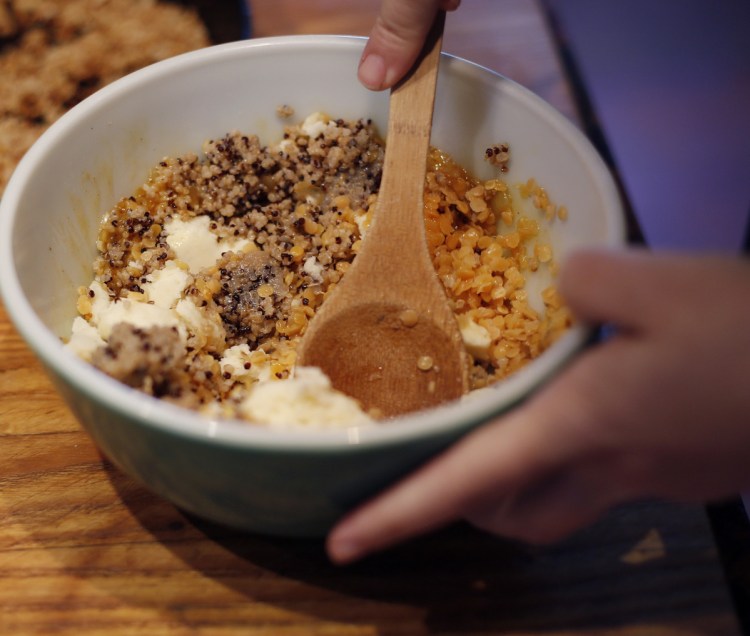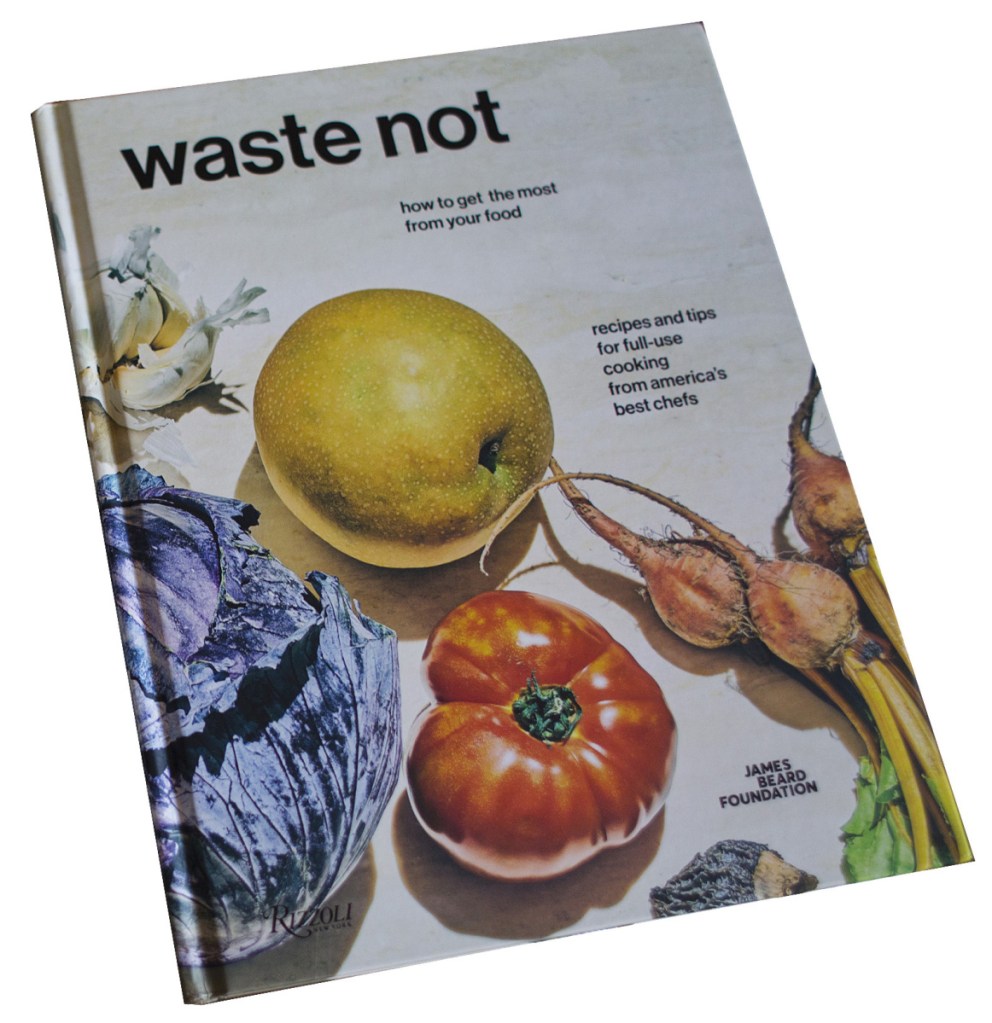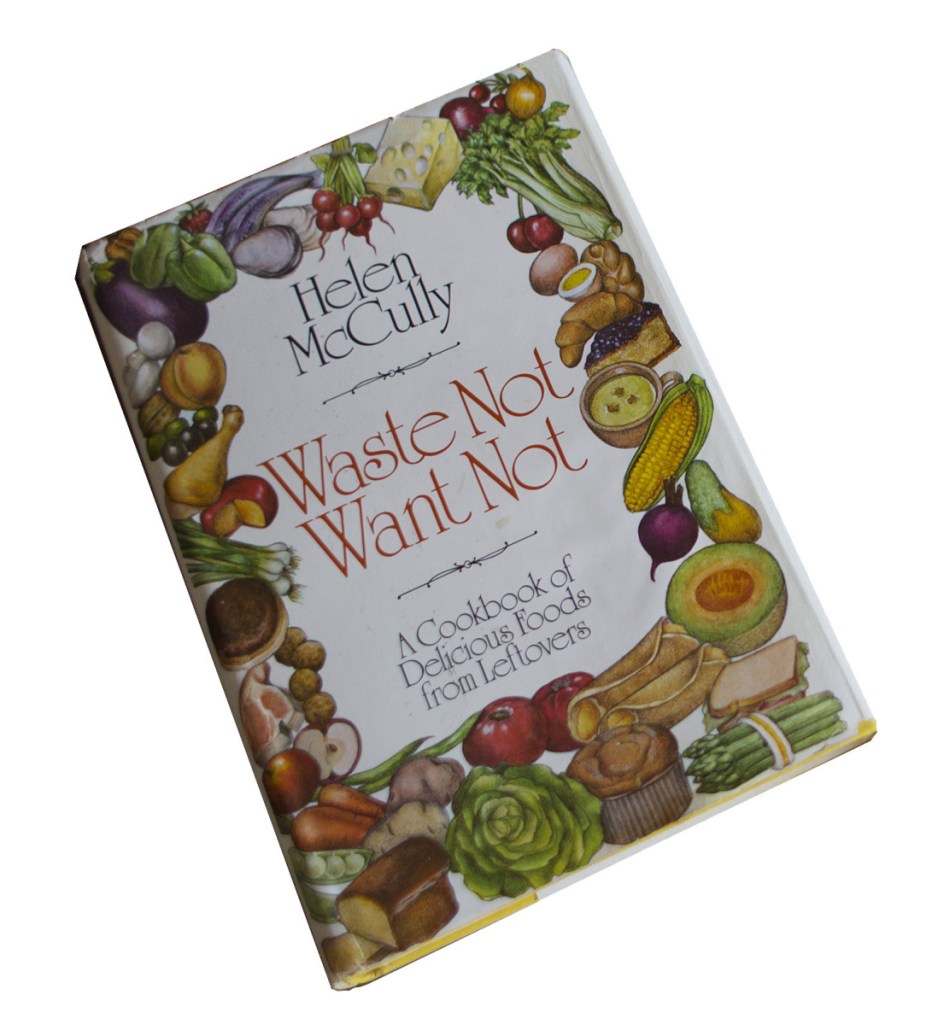Conceivably, two generations came between the 1975 publication of Helen McCully’s “Waste Not, Want Not” cookbook on upcycling leftovers, and the September release of the James Beard Foundation’s “Waste Not,” a compilation of recipes from some of America’s top chefs who use every last bit of the high quality ingredients delivered to their kitchens.
When both books landed on my desk last month, I decided to compare them in order to understand how the prospect of preventing food waste has changed in my lifetime.
Coincidentally, McCully’s introduction, and the forward to the 2018 “Waste Not” compilation penned by celebrity Chef Tom Colicchio, start off with the same five words. McCully, born in 1902, writes “When I was growing up in Nova Scotia…” Colicchio, born in 1962, writes “When I was growing up, cooking in our house in Elizabeth, New Jersey…”
McCully’s father would not think of eating leftovers because, as a successful provider, he could afford better for his family. But the family’s cook, a woman named Susan, wouldn’t waste a morsel and repurposed most into dishes he didn’t recognize as leftovers.
Colicchio watched his parents, grandparents, aunts and uncles, immigrants who had already endured the Great Depression, use the ingredients in their kitchens with a thrift “little discussed and much practiced.”
McCully, a food editor for McCall’s and House Beautiful based in New York, wrote her Waste Not to convince readers “that serving your family a meal of leftovers is not the sign of a fallen woman.” Rather, she argues that using them up provides a “psychological boost of doing a good deed.” Conservation for the common good was in the air in the early ’70s as food and oil prices were sky high. Cutting back on food waste was a social issue.
It still is, says Colicchio, because the hidden costs of food waste (40 percent of all the food produced in the U.S.) jack up food prices and hit low-income families the hardest. A 15 percent drop in food waste could feed 25 million Americans annually, he writes.
Both books give home cooks solid guidance on how to attack the pile of American food waste, but they do it from somewhat different angles.

Christine Burns Rudalevige forms patties to sauté.
McCully assumes you’ve made too much of a good thing, and you need to find a way to use it up. For example, take the 2 cups of mashed butternut squash left over from your family’s dinner last night, combine it with chicken broth, honey and cream and turn it into bisque for your lady’s luncheon. Or take a cup of leftover rice, plump it and a handful of raisins in a pot of warm cream and fold in a whipped egg white to make a dessert.
The chefs in the James Beard Foundation book espouse “full-use cooking” in which they cook only what they need of any one high-quality ingredient, but find uses for the other parts of that product to essentially create a different ingredient. For example, take the seeds of the butternut squash, roast them and process them in a blender to get squash seed tahini. Or, once you’ve taken the kernels from their cobs to create vanilla creamed corn, make a corn cob stock and freeze it into a sorbet.
I recommend both books to home cooks (as well as my own 2017 book, which espouses many of these same waste reduction principles and, hey, buy local!) who want to tackle the issue of food waste in their own kitchens and need a few ideas on how to make that happen.
ABOUT THE WRITER
CHRISTINE BURNS RUDALEVIGE is a food writer, recipe developer and tester and cooking teacher in Brunswick, and the author of “Green Plate Special,” a cookbook from Islandport based on these columns. She can be contacted at cburns1227@gmail.com
Send questions/comments to the editors.





Success. Please wait for the page to reload. If the page does not reload within 5 seconds, please refresh the page.
Enter your email and password to access comments.
Hi, to comment on stories you must . This profile is in addition to your subscription and website login.
Already have a commenting profile? .
Invalid username/password.
Please check your email to confirm and complete your registration.
Only subscribers are eligible to post comments. Please subscribe or login first for digital access. Here’s why.
Use the form below to reset your password. When you've submitted your account email, we will send an email with a reset code.